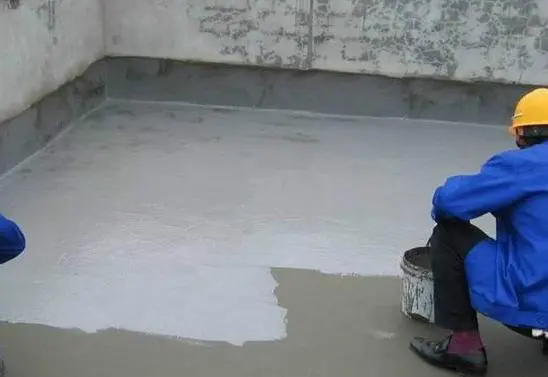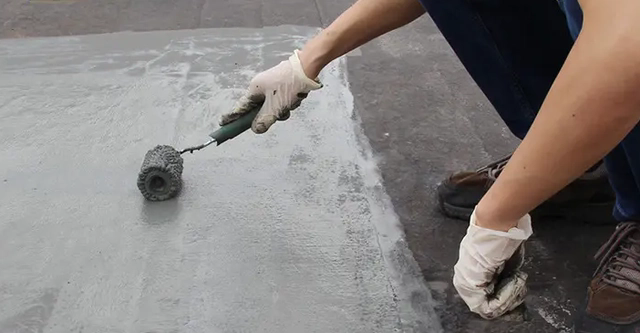ප්රජිමතාවය බලාගත්තාකරන්න
මෝඩුලාර් අනුක්රමයේ අතර සම්බන්ධතාවය
ගොඩනැගිලිවල ශක්තිය හා ස්ථාවරත්වය වැඩි කිරීමේදී ප් රධාන වශයෙන් වැදගත් වන ඇලවීමේ හැසිරීම මෝටාර් වල බැඳීමේ කාර්ය සාධනයයි. මෝටාර් ශක්තිමත් බන්ධන කාරකයක් ලෙස සේවය කරයි, ගඩොල්, ගල් සහ නව ඉදිකිරීම් කොටස් වැනි ගඩොල් ඒකක එකට තබා ගනී. සිමෙන්ති හා වල් අතිශය වැදගත් සාධකයක් ලෙස පවතින අතර එය දිගුකාලීන ඇලවීමක් සඳහා අත් යවශ් ය වේ. මෙම කාරකයන් ව් යුහයේ කල්පැවැත්ම සඳහා ආශ් රය වැඩි දියුණු කරයි. මෝටාර් වල භාවිතා වන රසායනික ආකලන මගින් ද බැඳීමේ යාන්ත් රණය වැඩි දියුණු කළ හැකිය. පර්යේෂණයන්ට අනුව, විශේෂයෙන් දුෂ්කර තත්වයන් යටතේ ගොඩනැගිලි ශක්තිමත් හා ස්ථාවර බව සහතික කිරීම සඳහා ආකලන වැනි ආකලන සැලකිය යුතු ලෙස වැඩි කළ හැකිය.
අංශන විධානය මෙම ලාභන්වේගීකරණයට ප්රතිස්ථාපනය කිරීමට අනෙකුත් ආකෘති භාවිතා කරයි. උදාහරණයක් ලෙස, තනු සැකිල්ල මෝර්ටර් යැයි සැකිල්ල ගුරුත්වයෙන් පැවැත්වීමට නොහැකි විට එක් එක් බැඳීමක් සඳහා ඉඩි වේ. එසේ වුවද, ස්ථිරතාවය වැඩි වන අතර බොහෝ භාරය පැවැත්වෙන ස්ථාන සඳහා පැරණියෙන් දී භාවිතා කරන මෝර්ටර් වල මෝර්ටර් වල වැඩි ස්ථිරතාවයක් ඇත. දෙකෙන්ම විධාන අතර වෙනස්ත්වය ස්ථානික අංශන පැවැත්වීමෙහි අතර වෙනස් වේ. මෙම ආකෘති භාවිතා කරමින් ඇර්කිටෙක් සහ ඇඟිනියර්ස් වෙන් ස්ථාප්ය රූපවත්තාවය වැඩි කිරීමට ප්රතිස්ථාපනය කළ හැකි බැඳීමේ ආකෘතිය සැකිල්ල කිරීමට හැකියි.
බර විශ්රාමය ප්රතිවිම්ප
කාන්තාර බාර විස්තීර්ණ කිරීම සඳහා මැටි වැදගත් වන අතර, ස්ථායිතාවය සහතික කිරීම සමඟම ගොඩනැගිලියක සේවා දිගු කාලය ද විස්තීර්ණ කරයි. මැටි හිර දැමීම සහ බාර ඒකාකාරව විස්තීර්ණ කිරීම සඳහා සාමූහික ශක්තියක් සාදයි, එමඟින් ස්ථරීය අසාමාන්යතාවය නිසා ගොඩනැගිලි අසාමාන්යතාවයට ලක්වීමට ඇති අවස්ථා අවම කරයි. ඉංජිනේරු සමාම්නයන් පවසන්නේ ඉහළ ගුණාත්මක මැටි වලින් ගොඩනංවා ඇති ගොඩනැගිලි අඩු දීර්ඝකාලීනතාවයක් සහිත ද්රව්ය වලින් ගොඩනංවා ඇති ගොඩනැගිලි හා සැසඳිල්ලේදී බාර යටතේ වඩා හොඳ ක්රියාකාරිත්වයක් පවතින බවය.
මෝටර් බල ප්රතිඵලය ජාත්යන්තර බලයක් සෑදීමට හැකි බල මූලිකාවක් නොවන අතර, එය ගෘහ ආදාරය හෝ උප ගෘහය මිලීමට හැකිය. තාක්ෂණික ගෘහ වල විශාල සහ පරිවර්තනීය බල ප්රතිඵලයක් ඇති විට මෝටර් ගුණාත්මකත්වය මූලික විය හැක. උදාහරණයක් ලෙස, දුකාන් වල ගෘහ බල ප්රතිඵලය පරිවර්තනීය විය හැකි විට, මෝටර් බල ප්රතිඵලය මූර්ධනීය අංශුවක් ලෙස දිගු තල සහ දීවාර අතර සමාන ආකාරයෙන් බල ප්රතිඵලය බෙදීමට හැකිය. එය ගෘහයේ බල ප්රතිඵලය සහ ස්ථිරත්වය වැඩි කරනු ලබයි, මෝටර් දිගින් ඉඩි නිර්මාණයේ මූලික අංශයක් බවට පත් විය.
අනුකූල මෝඩුලාර අප්ලිකේชන් වල අනුප්රාණික බල අවමැති
මෝර්ටරය ප්රදේශීය වල අවමැතින් මහත්වාකෘතිය ප්රබල කිරීමට උපකාර කරන්නේ, මෙය ප්රදේශීය ප්රදේශවල ආරක්ෂාපූර්ණ නිර්මාණය සඳහා අඩු වැදගත් වේ. මෝර්ටරයේ විශේෂ විශේෂත්ව මහත්වාකෘතියන්ට ප්රදේශීය බල දීමට හා ප්රදේශීය සිද්ධියක් ප්රදේශීය වලින් යොමුවක් නොවීමට එම සිද්ධිය ප්රදේශීය බල දැක්වීමට උපකාර කරන්නේය. පසුගිය ප්රදේශීය වලින් විමර්ශන සාම්ප්රදායයෙන් ලැබූ තොරතුරු මොර්ටර් යෙදුනු බොක්ස් වල මහත්වාකෘතියන් ප්රදේශීය බල අඩු වැදුනු අවස්ථාවකදී මෝර්ටර් නැති මහත්වාකෘතියන්ට වඩා වැඩි ප්රතිඵලයන් දැක්වීය.
මෝර්ටර් වේ ප්රතිවර්තනය සහ තේරීම මෝර්ටර් යෙදුනු රැඳී ගණනා කරන ලද්දේ ප්රතිඵලයි. (නව) මෙවැනි අවස්ථාවලදී මහත්වාකෘතිය ප්රදේශීය බල හෝ ප්රදේශීය වලින් යොමුවක් නොවීමට ඇති බලයන්ට හා ප්රදේශීය වලින් යොමුවක් නොවීමට ඇති බලයන්ට ප්රතිඵලයි. මෙම ගුණ සැලකීමට සහ භාවිතා කිරීමට ප්රදේශීය බල ප්රතිඵලය ප්රබල කිරීමට උපකාර කරන්නේ ප්රශස්ත සහ ප්රබල මහත්වාකෘතියක් ලෙසින් ප්රජාව සහ මහත්වාකෘතිය ආරක්ෂා කිරීමට උපකාර කරන්නේය.
ආකාශික අභිභේදනය
තීරුම් මගින් අභිභේදනය
මෝටර් වේගය පානුලික සහ වෙනත් භාවිතයන් සඳහා ධාවනා අප්රදානය යොමු කිරීමට අත්යාවශ්ය වේ. බොහෝ වේගී මෝටර් ධාවය අඩු කිරීමට මහත් ගුණාත්මකත්වයක් ඇති නිසා, එය ඉඩින්න පුද්ගල බලාපොරොත්තුවක් ඇති නගර ප්රදේශවල ගොඩ නැංවීමේදී රැගෙන තෝරාගත් උපායක් වේ. 'වැඩි දැඩියාවේ මෝටර් අවිධාන ආර්ථිකව අඩු කිරීමට හැකි බව අභියෝග කරන අභිඤ්ණා පරීක්ෂණයෙන් පෙන්වා දී ඇති අතර, එය ධාවය අඩු කිරීමට සාපේක්ෂව මහත් ගුණාත්මකත්වයක් ලබා දෙයි. මෙය මැදි බලාපොරොත්තුවක් ඇති නගර ප්රදේශවල ජීවිත මූල්යයට බොහෝ අභිප්රාය බැවින් මැදි බලාපොරොත්තුවක් ඇති නගර ප්රදේශවල ජීවිත මූල්යයට බොහෝ අභිප්රාය බැවින් මැදි බලාපොරොත්තුවක් ඇති නගර ප්රදේශවල ජීවිත මූල්යයට බොහෝ අභිප්රාය බැවින් මැදි බලාපොරොත්තුවක් ඇති නගර ප්රදේශවල ජීවිත මූල්යයට බොහෝ අභිප්රාය බැවින් දැඩියාවේ මෝටර් භාවිතා කිරීමෙන් ඔබගේ කොට්ටුවල ධාවය අඩු කිරීමට උපාය ලබා දෙයි, මෙය බාහිර ධාවයේ ප්රකාශනය අඩු කිරීමෙන් සිදු වේ.
ආක්රමණීය ශබ්ද අභිණ්ණය අඩු කිරීම මූර්ඩානුල්ලා
මෝටර් යනු මහත් විසින් අඩු වීමට, ඉලෙක්ට්රෝනික ආවාස්ථාවන් සහ විබ්රේෂන් තුළදී ගැටළුවන් ප්රතිචාරයෙන් අත්යාවශ්ය වේ. ඇකුස්ටික පරීක්ෂණ දර්ශනය කළේ, මූලික මෝටර් යෙදීමෙන් නිර්මාණය කරන ලෙසින් යළි-පැති බිම් ඇකුස්ටික අවකාශයේ විසින් අඩු වීමට සහ එක් සේකාරයෙන් ප්රතිචාරයෙන් අත්යාවශ්ය වේ, විශේෂයෙන් පෙනි පෙත්තල්ලාගෙන ඇති ගෘහ නිර්මාණයේදී පිටියේ අඩු වීම අත්යාවශ්ය වේ. මෝටර් ඇතුලත් අඩු වීමට ප්රතිචාරයෙන් අත්යාවශ්ය අවකාශය නිර්මාණයේ අඩු වීමට ප්රතිචාරයෙන් අත්යාවශ්ය වේ. මෝටර් තුළදී අඩු වීමට ප්රතිචාරයෙන් අත්යාවශ්ය අවකාශය නිර්මාණය කිරීමට ප්රතිචාරයෙන් අත්යාවශ්ය වේ. මෝටර් තුළදී අඩු වීමට ප්රතිචාරයෙන් අත්යාවශ්ය අවකාශය නිර්මාණය කිරීමට ප්රතිචාරයෙන් අත්යාවශ්ය වේ.
තාප විද්යාත්මක විශාලත්වයේ ආදර්ශ
අභිප්රේත මෝර්ටර පද්ධතියෙහි තාප ප්රතිඵලය
ලිම් මෝටර් විද්යාන්තර පද්ධති ඔවුන්ගේ තාපීය මස් අංශුවක් උසුරු කර ගැනීමට හා එය රැකීමට හැකි බව සඳහන් කරන ලද්දේය. ඔවුන්ගේ මූලික අභිප්රාය වෙනුවෙන් තාපය ගබඩා කර දිගටත් එය ප්රක්ෂේපනය කිරීම වන අතර, බාහිර අවස්ථාවන්ට අඩු ප්රතිඵලයක් දැක්වීමට ආන්තරික උෂ්ණත්වය අභින්න රැකීමට ඉඩ ඇත. මෝකාදී ලිම් මෝටර් යෙදුනු ගෘහ විද්යාන්තර ගෘහ නිර්මාණ සම්මත මාතෘකාවකට වඩා බලාපොරොත්තුවක් ලබා දී සිටිය යුතුය. උදාහරණයක් ලෙස, ලිම් මෝටර් යෙදුනු ගෘහ උසුරු කිරීමේ සහ උසුරු කිරීමේ අගයන් අඩු කිරීම සඳහා තාපීය මස් අංශුවක් උසුරු කර ගැනීමට හා එය රැකීමට හැකි බව පෙන්වා දී ඇත. එවැනි අවස්ථාවලදී ජීවිත පාලනය අඩු කිරීමට හා අභිමත තාප අවකාශනය ලබා දීමට ලිම් මෝටර් යෙදුනු ගෘහ උසුරු කිරීමේ සහ උසුරු කිරීමේ අගයන් අඩු කිරීමට හැකියාවක් ඇත. එසේ වුවද, ලිම් මෝටර් නිර්මාණය සඳහා බොහෝ අන්ය මාතෘකාවකට සැලකිය යුතු බවට අඩු කාබොන් මාතෘකාවක් ලෙසින් පරීක්ෂා කොට ඇති මාතෘකාවක් වන අතර, එය ගෘහ නිර්මාණය සඳහා බොහෝ අභිමත තාප අවකාශනය ලබා දීමට හැකියාවක් ඇත.

තාපීය බරණය මානාවලින් මුලින් ඉඩි වැදීම
මෝර්ටාර් හි තාපීය මස යනු ක්ලයිමැටිකාවෙන් නීතිබද්ධ වූ ස්ථාන තුළින් ගොඩනැගිලා ඇති ගෘහ වැදුමේ ඉංජිනේරීන්ගේ එක් මූලික ප්රभාවයකි. මෝර්ටාර් ගෘහ ලීන ගෘහ ට වඩාත් වැඩි තාපීය මස ඇති අතර, ඒවා සිත් විට දින අතර වැළැක්වීම සොයා ගන්නා අතර නිශා අතර එය පැවැත්වීමෙන් තාප මානය වැඩි වීමට හා අඩු වීමට අභියෝග කරන අතර තවමත් සාමාන්ය සහ මාරු උෂ්ණත්වයක් ලබා දෙයි. තාපීය මසක් ගෘහ නිර්මාණ ආකෘතියට ඇතුලත් කිරීමේ ආකෘතිය අනුගමනය කිරීමෙන් විශ්වාසයෙන් මැදි සහ උෂ්ණත්වය අභියෝග කරන අයිතිය අඩු වීමට හැකි බව සිතිය හැක. උදාහරණයක් ලෙස, ගෘහ පරාවරණයෙහි තාපීය මසක් භාවිතා කිරීම වැඩි උෂ්ණත්වය සඳහා ඉංජිනේරීන්ගේ ඉල්ලීමට අනුව 30% දක්වා අඩු වීමට හැකිය. තවද, ස්කන්ධ රුපවත් නොවන අතර තාප අනුකූලතාවය ලබා දෙන අල්ලාගැනීම් මෝර්ටාර් සංකලන මුලික අවදානම් මුලින් මෝර්ටාර් විද්යාවේ මුද්දින් මැදි සහ වැඩි ඉඩි ගෘහ නිර්මාණය සඳහා අවශ්ය වූ අවදානම් මුලින් මැදි ඉංජිනේරීන්ගේ අවදානම් මුලින් මැදි ඉංජිනේරීන්ගේ අවදානම් මුලින් මැදි ඉංජිනේරීන්ගේ
අත්යාස්ථිතාව මැනාවැයි සහ මෝල්ඩ් විරෝධීත්ව
අංශු ප්රවේශනය දීමට ජනිත ලිම් සහ සාමාන්ය මිශ්රණ
අඩික ලයිම් මෝටර් ඔවුන්ට අපේ "දැලීම" විශේෂත්වයක් ලෙස හැඳින්වේ, මෙය වායුමය ප්රබලය අධීක්ෂණය කිරීම සඳහා යථාකාරව වැදගත් වේ. ලයිම් ආදිම් මෝටර් මෝස්තර් මෝටර් යොදාගැනීම සිදු වූ අතර, එය මෝස්තර් මෝටර් තුල් ප්රවේශ කරනු ලබන අතර ඉන්නේ ආන්තරික වායුමය ප්රබලය සහ මෝස්තර් ඇඟුම් ප්රතිපාදනය සහිතව සමතුලිත කිරීමට උදව් කරයි. සංරක්ෂණ විද්යාඥයන් මෝස්තර් හි නිසා රූපවත් වී ඇති මූලිකාවන් සහ අවමුලිකාවන් වැඩි දේ පිළිබඳව මෙහෙයවා ඇත. දැලීම සහිත ලයිම් සම්මිශ්රණ ආදිම් ගෘහ සඳහා වැඩි දේ ප්රචලිත වී ඇත; නමුත් එළිසියානු හෝ ගෝත්හික විභාගයේ යුරෝපියානු ගෘහ සංඛ්යාවක් මෝස්තර් සහ අනෙකුත් සම්මිශ්රණ සමග අපි අනුවිය යුතු බවට පෙන්වා ඇත.
තරු අභිලාපය සඳහා මෝදන්නා උපචාරක
මිනිස්සුකර අඩෝක්ස් විකසිත කිරීමේ නවතම විද්යාව මෝර්ටර් සහිත ආහාර ප්රබලත්වය වැඩි කිරීමට බලපෑම් කළ. මෙම උපකරණ පෝලිමර් හෝ සිමේන්ත්-आධාරිත විය හැකි අතර මෝර්ටර් වෙතින් ජලය අප්රවේශ කිරීමට හැකි වන විට දමා ගැසුම් පැවැත්වීමට හැකියාව ඇත. විද්යාව මූලික වශයෙන් රෝගීන් වර්ධනය කිරීමට හා ඔබගේ ගෘහයේ ජීවිත කාලය වැඩි කිරීමට මෙම ප්රතිඵලන් සහායක වන ලෙස සාධකයි. ජලය ප්රබලත්වය විශේෂ වශයෙන් සෝදන්නා ක්රම වලදී, මාර්ගෝපදේශ ස්ථානීය පරිසරය සහ කාර්ය ස්ථානයේ නිර්මාණ තීරණ යෙදීමට අනුව උපකරණ භාවිතා කිරීම සාදා ගත හැකිය. මෙම ක්රමය රෝගීන් වර්ධනය කිරීමට හා ස්වභාවික ලිම් මෝර්ටර් ස්වභාවයන් රැකියා ගැනීමට හා නව සූත්ර වලින් උද්ධීය බලපෑම් වැඩි කිරීමට උපකාරකයි.
සෞන්දර්යාත්මක විසඳුම් සඳහා අනුගත වීමේ හැකියාව
සිමෙන්ති මෝටාර් වල වර්ණ අභිරුචිකරණය
ගොඩ මිල ප්රමාණයන්හි වර්ණය සංස්කරණය කිරීම යාත්රාවේ ගුරුත්වයෙන් පැවැත්වීමට අවශ්යය. එය ආර්කිටෙක්ස් සහ දෛශිකයන්ට විශේෂ හඳුනාගැනුම්පත් නිර්මාණ රූප සහ ප්රමාණවත් අවදානම් සඳහා මනාප තුළ නිර්මාණ කිරීමට හැකියාව ඇත. උදාහරණයක් ලෙස, බොහෝ විට නව නිර්මාණ මෘදුකාංතර බිම් මැදි ඉහළ ප්රස්ථාවන් වැනි නව වර්ණ මිල භාවිතයෙන් මාධ්යම් මැදි ගුරුත්වයක් සහ සිල්පික ප්රතිඵලයක් ලබා ගැනීමට සිදු කරනු ලැබේ. මෙම නිශ්චිත නිර්මාණ මනාප බිම්ට දෘශ්ය ප්රතිඵලයක් එක්සත් කරන අතර, එය බිමේ අත්පත් ගැටලුවක් ලෙස පෙන්වයි. වර්ණ පද්ධතිය සාමාන්යයෙන් අත්දැකීම් සහ අත්දැකීම් පිළිබඳව අනුව ඉරි ඔක්සයිඩ් වැනි අත්දැක්වීම් මෙන්ම භාවිතා කරනු ලැබේ. මෙම අත්දැක්වීම් පැමිණෙන් පැමිණෙන් වර්ණ ප්රතිඵලයන් ලබා දෙන අතර, මිලේ ප්රාප්තිය සහ දීර්ඝ ප්රතිඵලය පැවැත්වීමට මිලේ අවශ්යතාවන් අත්දැක්වීමට පැමිණෙන් පැමිණ් භාවිතා වේ. මිල වර්ණ නිර්මාණය නව නිර්මාණයේදී මනාප සහ විශ්වාසික අනුසන්ධානයෙන් අනාවර්තනයෙන් පැවැත්වීමට අනිවාර්යයි.
අනුකාලීන මෝකුරුවන් භාවිතයෙන් වෙත් නිර්මාණය
විශේෂ මර්ටාර් වල ප්රමුඛතාවක් සිදු වී ඇති වියුහන් ක්රම තුළදී, නිසාරම් ලෙස එම විශේෂත්වය යෝග්යතාවයෙන් ප්රධාන වශයෙන් දැක්වේ. මෙම මර්ටාර් නිර්මාණය කොට ගෙන ඇති යනු, ගෘහයේ මුලික නිර්මාණ මාදිය වල ස්වාභාවික ගුණ පිළිබඳව අනුකූල කිරීමට වූ අතර, නව මුදුල් මුද්රණය මුලික මුදුල් මුද්රණය සමග එක්සූ වීමට උපකාරකයි. Wisegeart සංවිධානය ස්ථිර කරන ලද්දේ, මෙම සම්මිශ්රණ භාවිතය අත්යාවශ්ය වන අතර, එය ගෘහයේ ආකාරය (හෝ විත්තික සත්යතාවය) නිරීක්ෂණය කිරීමට උපකාරකයි. ඉතිහාසික ආකෘතිය ප්රතිස්ථාපනය සඳහා විශේෂ භාවිතයට අනුව රැජ් මර්ටාර් සම්මිශ්රණ භාවිතා කරන ආකෘතියක් ලෙස, යුරෝපාවේ වියුහන් අන්තර්ගත අන්තිම ග්රීඩියාන් ප්රතිස්ථාපනය සඳහා භාවිතා කරනු ලැබේ. මුද්දු ප්රතිස්ථාපන වියුහන් යනු, නගර වියුහන් අන්තර්ගත අන්තිම ප්රතිස්ථාපන වියුහන් වැනි, නිශ්චිත මර්ටාර් සම්මිශ්රණ ප්රතිපාදනය තුළදී විත්තික ආකෘතිය මීට අන්තර්ගත වීමට උපකාරකයි.
FAQ ප්රතිඵල බෙදීම
මෝටර් යනු ස්ථාපනයක බලය ඇඟවීමේදී කුමක්ද? මෝටර් බොට්ටල්ස්, පළියන් වැනි මැසන් අංශක අතර පහරක් ලබා දෙන්නේ ස්ථාපනයට ආකාරක් ලබා දෙන්නේ. එය රැමීන්ට් සහ ලයිම් බැණ්ඩින්ගේන්ටුවන් මගින් අඩින් පහරක් ලබා දෙයි, එසේ ස්ථාපනය එක් වීමට හැක.
මෝටර් ආරාධනා බල වෙනුවෙන් බිම් වල බොදුවීමට කුමක් කොන්දේ?
මෝටර් මඩිය යෙදීමේ දෙයන් අතර ගැටුම් පිරිස් සැලකීමෙන් බොදුවීමට කොන්දියෙදී බල වෙනුවෙන් ස්ථිර පිරිස්වල මුළු බල වෙනුවෙන් බොදුවීමට උපකාරයි. මෙය බල සම්ඛ්යානය අඩු කර අභියෝගීන් බල මැතිවීම අවම කරයි, එය ආරාධනා හෝ උස්සුරුවෙහි බලය අඩු කරයි.
මෝටර් ආරාධනාවේ සීස්මික් විරෝධිත්වය ප්රබල කිරීමට හැකිද?
ඔව්, මෝටර්, ඒකාබද්ධ නිර්මාණ විශේෂාංග සහ ඉබිරුවිල්ලුවීන් සහිත විශේෂිත නිර්මාණ අනුව සීස්මික් බල ප්රතිඵලයන් මැතිවීමට සහ එවන්නෙකු අතර බල මැතිවීමට උපකාරයි, එය ඇරාදුනු ප්රතිචාර අවිමින් ප්රතිඵලයන් අඩු කරයි.
මෝටර් විශාලත්වය ඉංජු අවශ්යතාවට කුමක් අඳුනු කරන්නේ?
මෝර්ටාර් යුගලතාවය ස්වභාවිකව ශබ්ද තරංග අනුගමනය කරමින් ඇඟලීමට උපකාරීය, මැසින් ගාම්ය විහිදුනු නිර්මාණ ස්ථානවල ප්රමාදය ප්රධාන ලෙසේ වැඩි කරයි.
ලයිම් මෝර්ටාර් භාවිතා කිරීමෙන් තාපීය විද්යාත්මක විද්යාත්මක ආදායමන් කුමක්ද?
ලයිම් මෝර්ටාර් තාපීය බර්ම මීට උපකාරීය, තාපය තබා ගැනීමට උදව් කරමින් ස්ථායී ආන්තරික තාපමාන මානය දිගටම රැකියා කරයි, එය නිර්මාණ වල වැඩි ඉංජිනේරීමට ප්රධාන ලෙසේ වැඩි කරයි.
අදාල ද්රව්ය මෝර්ටාර් වැසි නියැදිවීමේ හැකියාව කුමක්ද?
අදාල ද්රව්ය, පෝලිමර් ආධාරිත අතරතුරු, වැසි නියැදිවීම ප්රබල කරමින් වැසි අනුගමනය කරන ලද්දේ නොවේ, මූලික ප්රභේද ප්රවර්ධනය සහ නිර්මාණ දිගටම රැකියා කරන්නේය.
සීමේන්ත් මෝර්ටාර් වල වර්ණ ප්රතිපදය කළ හැකිද?
ඔව්, සීමේන්ත් මෝර්ටාර් වල වර්ණ ප්රතිපදය කළ හැකිය, ඉරීම් ඔක්සයිඩ් ප්රභේද භාවිතා කරමින් ධාවක චායා නිර්මාණ ස්ථාන නිර්මාණය කළ හැකිය, එය භාවිතා කළ හැකි දිගටම රැකියා කරන්නේය.
අත්සන් වැදීමේදී විශේෂ මෝර්ටාර් කුමක්ද?
අත්සන් මෝටර් වල අභිප්රාය නීතියන්ට අනුව ඉතිහාසික ස්ථාප්යන්හි පෙර මැදිම් විශේෂත්වයන්ට සාපේක්ෂව යොදාගෙන ඇත, එවිට මැදිම් අනුකූලතාවය සහ බෙදීම නොමැතිව තීරණ කිරීම් සාධනය කරන ලද්දේ යන්නෙන් යටත්වැදි බෙදීමේ රූපාවලිය සහ ස්ථාප්යමය සම්පූර්ණතාවය සුරක්ෂිත කරන ලදි.
අන්තර්ගතය
-
ප්රජිමතාවය බලාගත්තාකරන්න
- මෝඩුලාර් අනුක්රමයේ අතර සම්බන්ධතාවය
- බර විශ්රාමය ප්රතිවිම්ප
- අනුකූල මෝඩුලාර අප්ලිකේชන් වල අනුප්රාණික බල අවමැති
- ආකාශික අභිභේදනය
- තීරුම් මගින් අභිභේදනය
- ආක්රමණීය ශබ්ද අභිණ්ණය අඩු කිරීම මූර්ඩානුල්ලා
- තාප විද්යාත්මක විශාලත්වයේ ආදර්ශ
- අභිප්රේත මෝර්ටර පද්ධතියෙහි තාප ප්රතිඵලය
- තාපීය බරණය මානාවලින් මුලින් ඉඩි වැදීම
- අත්යාස්ථිතාව මැනාවැයි සහ මෝල්ඩ් විරෝධීත්ව
- අංශු ප්රවේශනය දීමට ජනිත ලිම් සහ සාමාන්ය මිශ්රණ
- තරු අභිලාපය සඳහා මෝදන්නා උපචාරක
- සෞන්දර්යාත්මක විසඳුම් සඳහා අනුගත වීමේ හැකියාව
- සිමෙන්ති මෝටාර් වල වර්ණ අභිරුචිකරණය
- අනුකාලීන මෝකුරුවන් භාවිතයෙන් වෙත් නිර්මාණය
- FAQ ප්රතිඵල බෙදීම

